Enter Here: 36.1172906, -115.9636512 (See Blue dot on map below.)
The Yellow line shows the “flattest route” in my opinion. Please dont just barrel through because i said so, arrive during the day, scout trails if you feel you need to.
The Green line on map below shows all the trails closer to the main area. There are many other areas to camp behind this area that all are welcome to camp in.
Caravan Anchor will be parked at: The Green dot on the map below, 36.113571, -115.965900
Slow entry off the road due to burm. There is a white “No Dumping” sign directly off the road alongside the entrance.
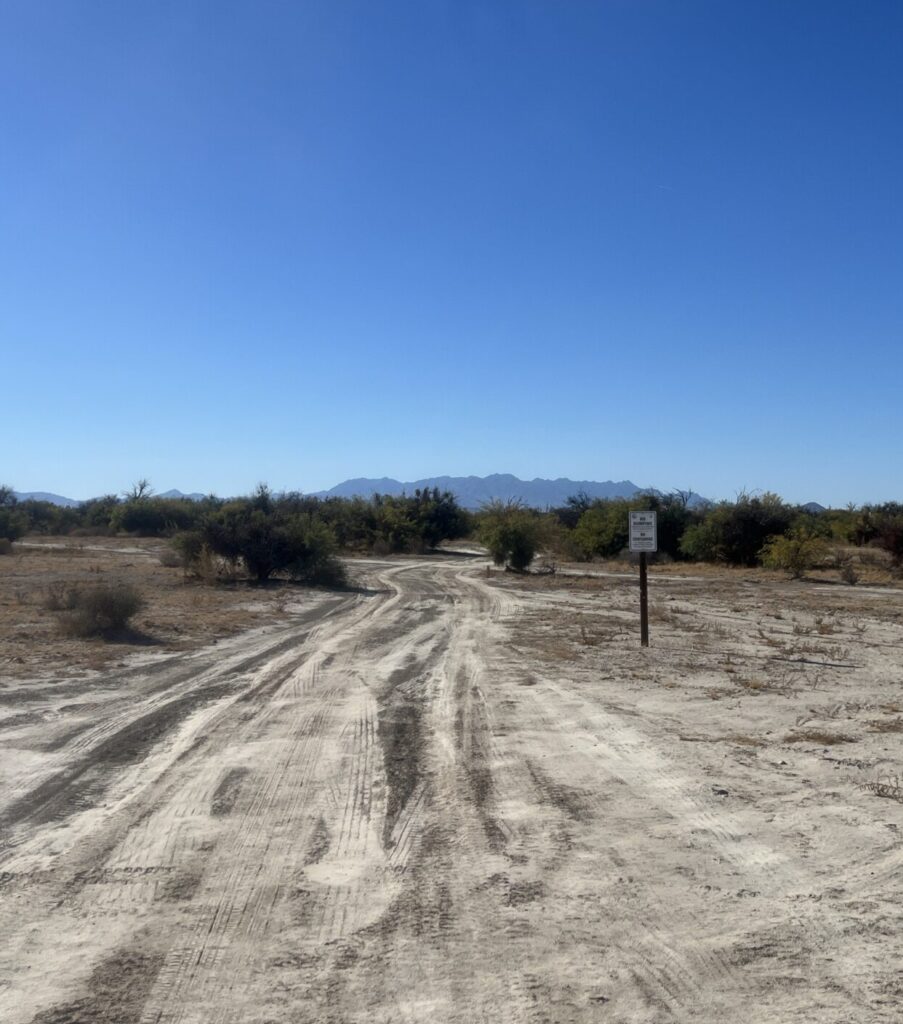
There is an obstacle on one of the trails. The locals have marked it off pretty good, but here is a pic just for reference.
It looks like something dug a good size trench across the road. Please find another route around and maybe come check this out on foot.
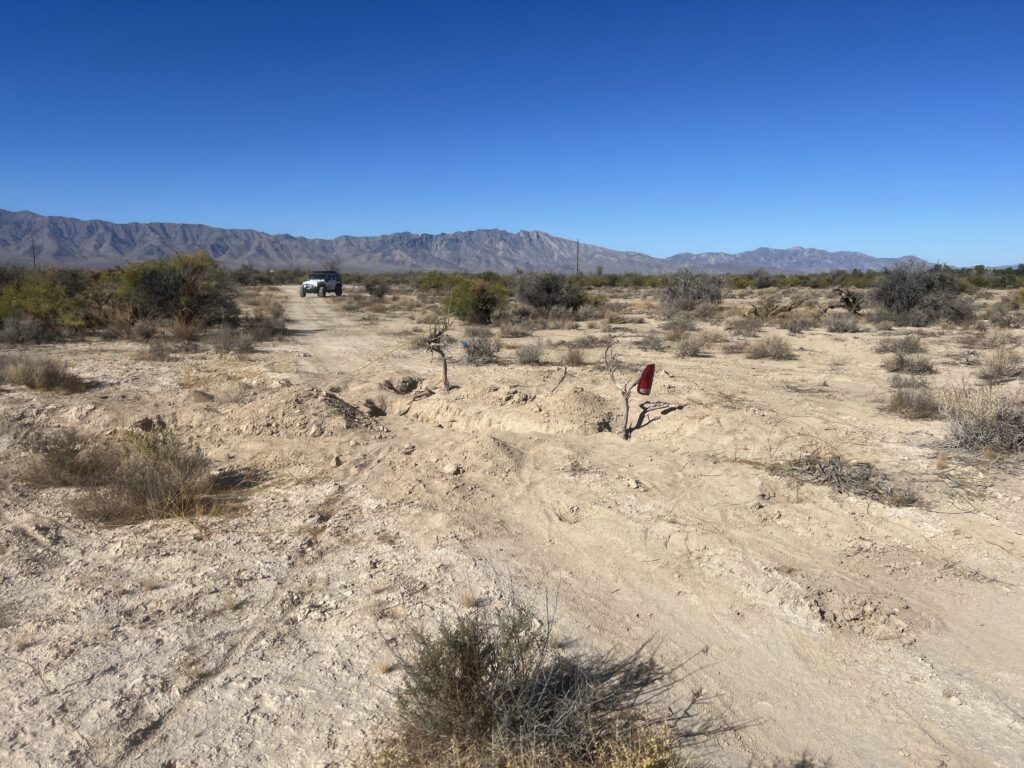
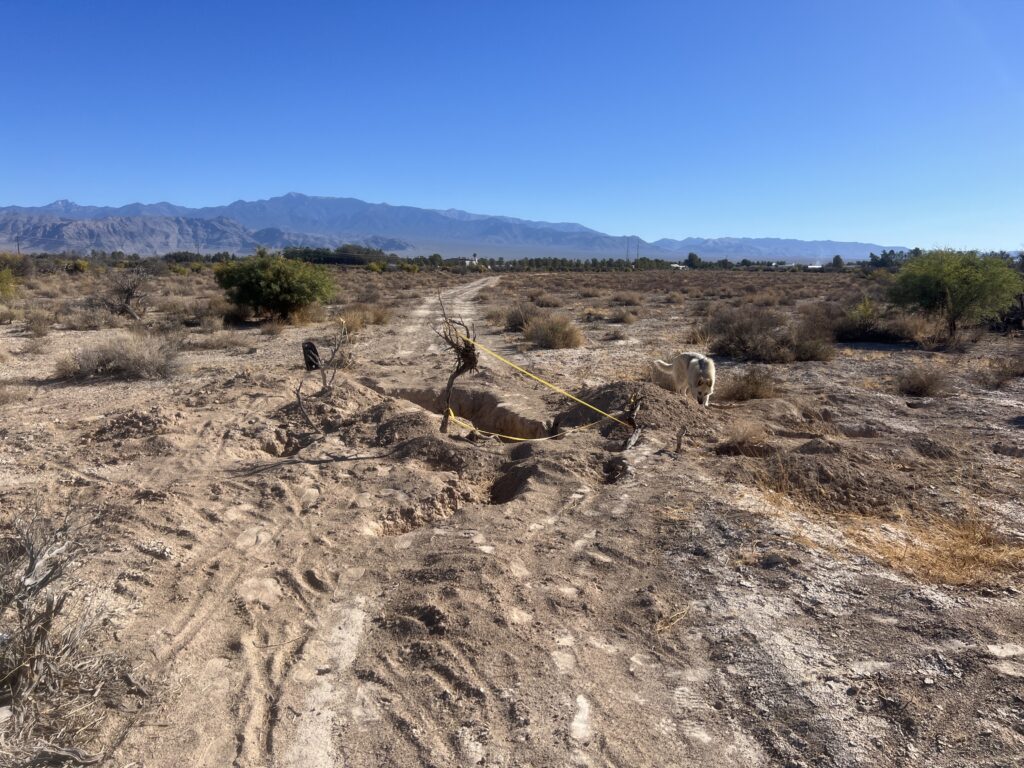
This is an all dirt trail leading between large bushes. Some of the bushes are closer than others. The farther in you go the more large bushes, which equals shade. It is soft in some areas, be sure to test the ground if you feel it may be to soft. There are plenty of areas to park on hard ground.
Some of the trails in are more rutted than others, I will try to map out a route best for the lower sports cars of the group… although most cars should be able to navigate 90% of the area.
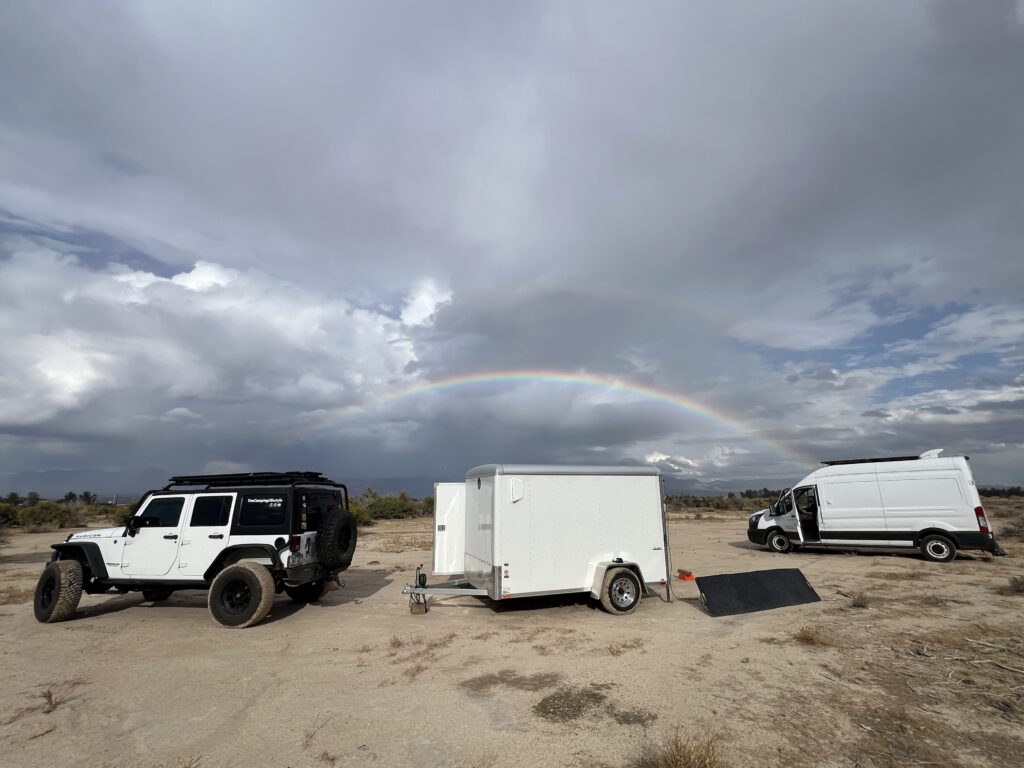
Here are Pete and Sandi’s set ups. Pete and Kitty are in the white Jeep towing the white cargo trailer, while Sandi resides in the white Ford Transit.
Stop by and say hi. Throw the ball for Kitty or Bring a chair and play some board games with Sandi!
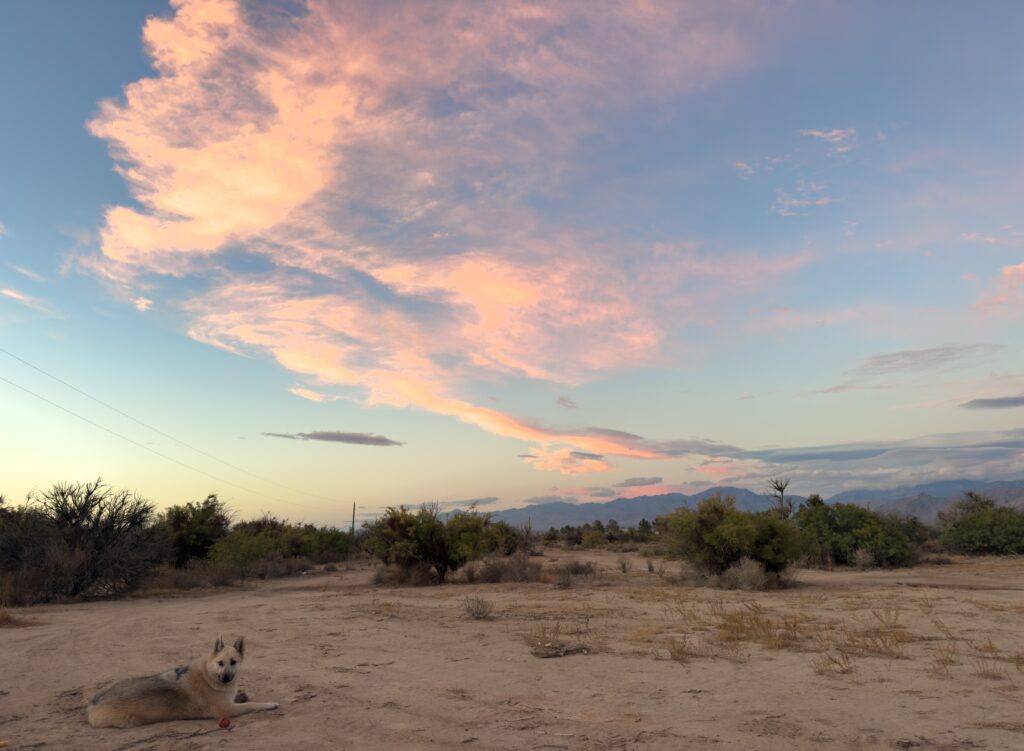
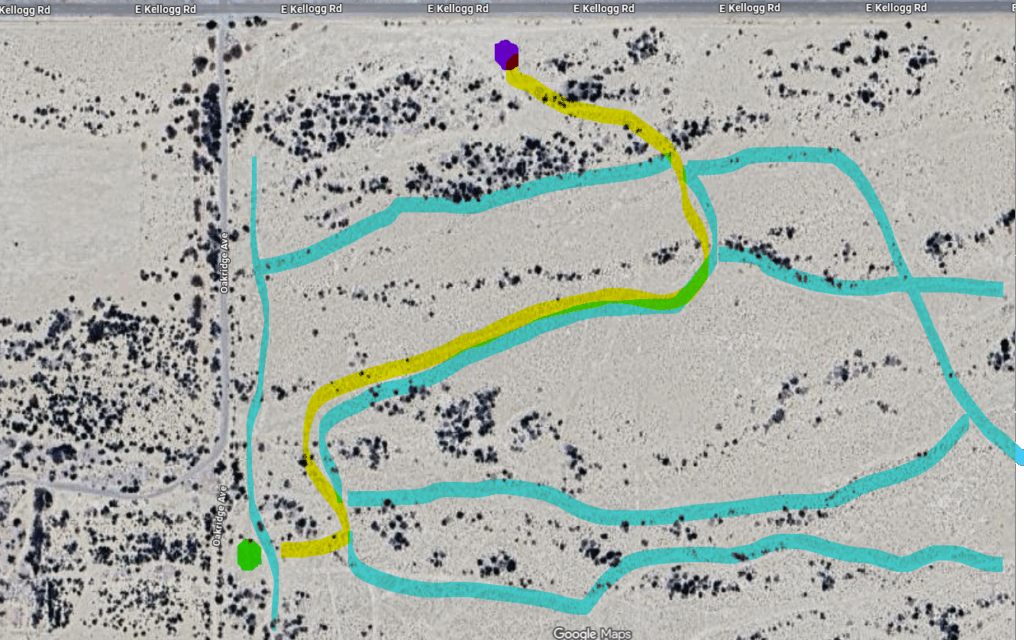
Yes this map looks a little wonky, it will make better sense once you see…. I hope, lol. 🙂
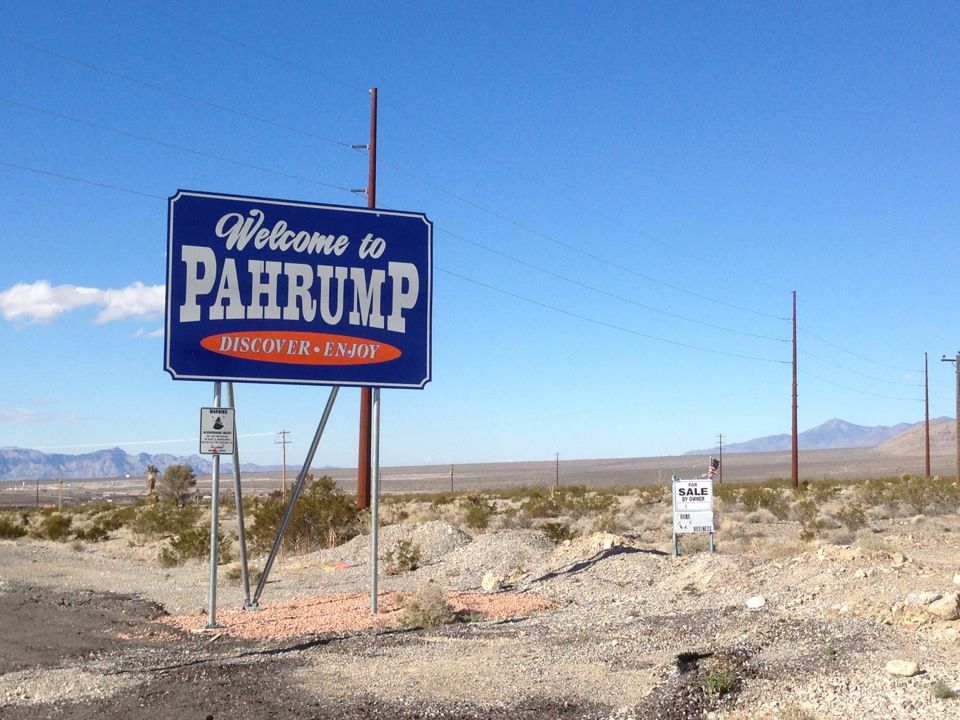
Info for Pahrump Nevada
USPS Locations:
- 2300 E postal Dr, Pahrump, NV
- 3001 E Kellogg Rd, Pahrump, NV
- 3950 N Blag Rd, Pahrump, NV
Sheriff
- 1520 E Basin Ave Pahrump, NV 89060
- (775) 751-7000
Emergency Services, Pahrump, NV
- Desert View Hospital 360 S Lola Ln, Pahrump, NV 89048
- (775) 751-7500
RESTAURANTS: lots on NV 160
- Johnny’s Taco Shop / Mexican
- 7 days 10a-8p
- 1330 NV-160 #2 Pahrump, NV 89048
- (775) 727-3733
- El Jefe’s Mexican Restaurant
- Tuesday-Sat 9a-7p / Mon 10a- 7p
- 1560 Calvada Blvd Pahrump, NV 89048
- (775) 537-6034
- Mom’s Diner
- 7 days 6a-8p
- 1240 E. State St Suite #100 Pahrump, NV 89048
- (775) 751-9929
Birding Around Discovery Park, Pahrump
Discovery Park, located near downtown Pahrump, is an abandoned golf course that was taken over by Red Rock Audubon and the efforts of local citizens who live on the perimeter of the park and elsewhere in Pahrump. Getting better all the time, birders have now recorded 176 species in Discovery Park.
Day-use only.
Pahrump Valley Museum
From Native American artifacts to pioneer relics, the museum offers a glimpse into the past.
Hours: Tuesday thru Saturday 9:00am to 5:00 P.M. 401 E BASIN AVE, Pahrump Nevada Admission is free, donations appreciated
Ash Meadows National Wildlife Refuge
A recognized wetland of international importance, Ash Meadows National Wildlife Refuge is one of the first in the United States designated a Ramsar site. Ash Meadows National Wildlife Refuge was named after the galleries of ash trees described in expedition notes from 1893. This desert oasis, a very rare and unique ecosystem, is recovering and playing an important role in global conservation efforts. The refuge strives to promote conservation management and awareness through environmental education, outreach programs, volunteerism, and visitor services programs.
8757 Spring Meadows Road SAmargosa Valley,NV89020-9632
COMMUNITY AMENITIES:
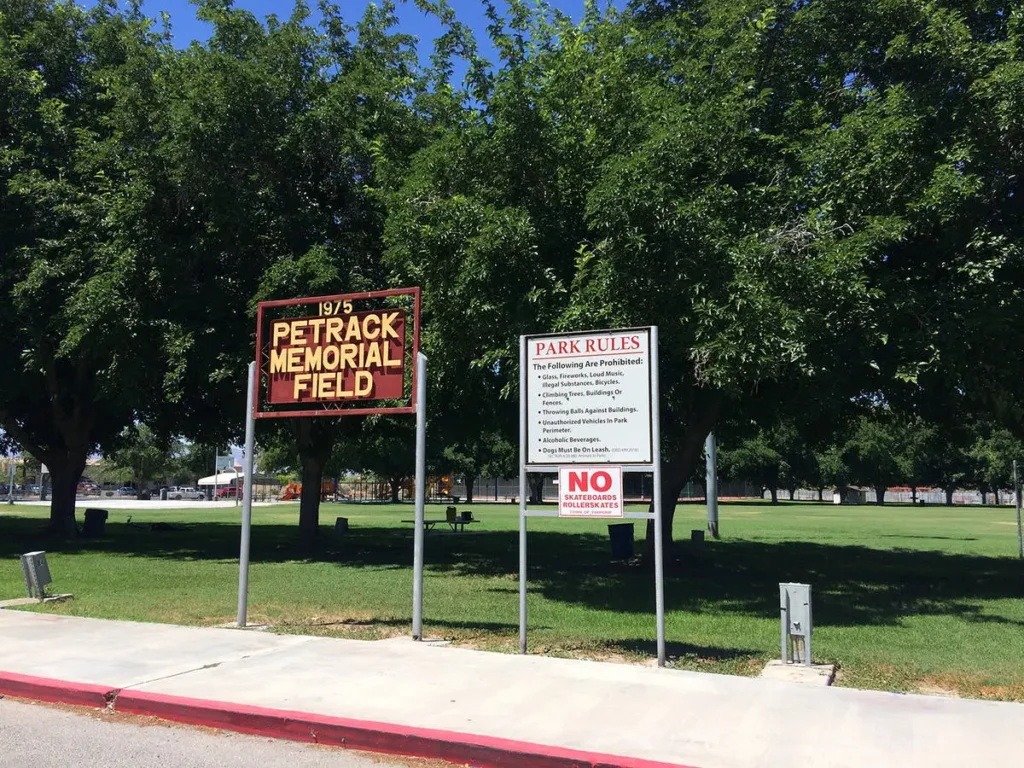
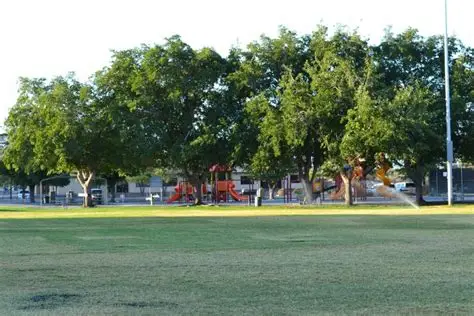
https://www.pahrumpnv.gov/facilities/facility/details/Petrack-Park-2
- Community Center
- Petrack Park
•Public restroom · Dogs allowed · Picnic tables • open 6am – 10p • trees, grass, basketball court, playground, lots of space to walk your dog, numerous trash bins & several dumpsters, pool (closed for season)
150 NV-160 Pahrump, NV 89060 (775) 727-5107
Food Pantries
•Great Basin College – ok for non-residents 👍
- PLACE: 551 E. Calvada Blvd. Pahrump, NV
- (775) 327-5210
- TIMES: Monday – Friday 8:00am – 5:00pm
- NOTES: After-hours availability during the semester.
(See Sandi for a complete list with locations of Food Pantries in the area.)
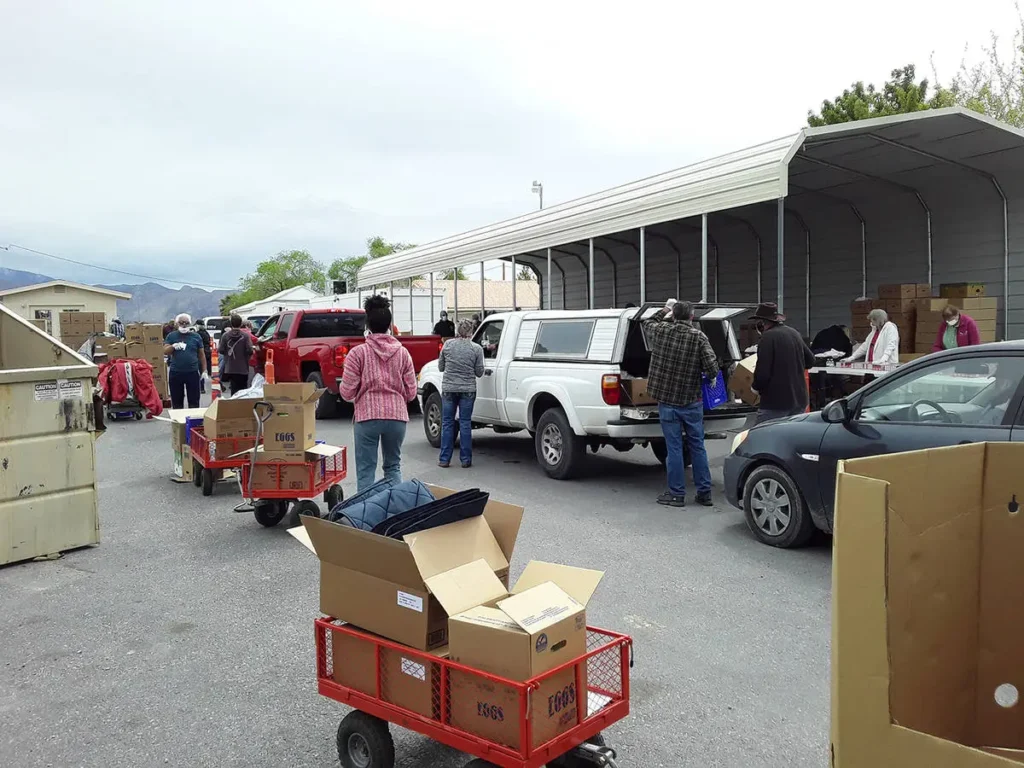
OVERNIGHT PARKING:
- Walmart Supercenter #5101 002 (confirmed-park at far end of lot near Hwy)
- 36.21530° N, 115.99315° W
OTHER:
- Home Depot – 7a-9p open 7 days
- 301 NV-160 Pahrump, NV 89060
- (775) 751-6004
LAUNDROMAT:
- Pahrump Station Laundromat 1141 NV-160 Pahrump, NV 89041
- Laundry 5020 Pahrump Valley Blvd #3 Pahrump, NV 89048
- Laundromat 4062 Blagg Blvd Pahrump, NV 89060
This is a usable map of the area, click or tap to zoom or move screen.